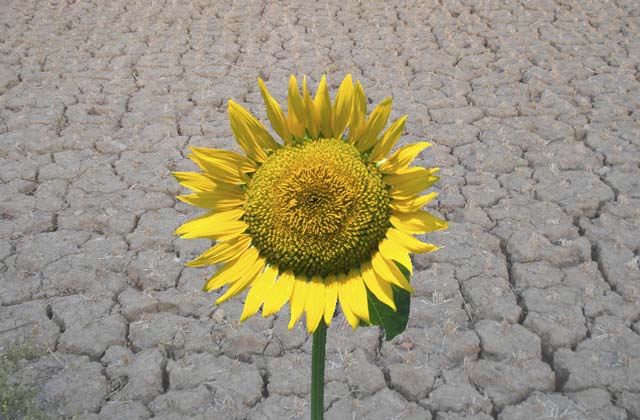What Happened to the Dream?
Share
The glue that holds us together is the ten key values, and caring and compassion for the earth and its inhabitants, both human and non-human.
About 25 years ago, green seeds were drifting over to the U.S. from Europe and taking root on our continent. Folks started gathering and we called ourselves ìGreens.î †We had a dream for the future of our country based on: cooperation rather than competition, solving our conflicts by communication rather than fighting, and creating a sense of community among ourselves and within our country.
As new Greens, we talked about values and couched them as questions, realizing we didnít have the answers but were open to listening to others and together seeking a resolution of the ills that beset our country. We asked questions like: †ìHow can we operate human societies with the understanding that we are part of nature, not on top of it? How can we develop effective alternatives to our current patterns of violence at all levels from the family and the street, to nations and the world? How can we respond to human suffering in ways that promote dignity?î
 Many of the Greens who came together those many years ago were involved in the Bioregional movement. ìDeep Ecologyî was the name given to the core belief, which recognized the interconnectedness of all life. Many lived in intentional communities and were involved with organic gardens, food circles, food co-ops, alternative housing and alternative fuel sources. We envisioned an interconnected world which was in harmony with nature.
Many of the Greens who came together those many years ago were involved in the Bioregional movement. ìDeep Ecologyî was the name given to the core belief, which recognized the interconnectedness of all life. Many lived in intentional communities and were involved with organic gardens, food circles, food co-ops, alternative housing and alternative fuel sources. We envisioned an interconnected world which was in harmony with nature.
This was the dream twenty-five years ago. What happened to the dream? Is it merging into reality or has the harsh light of day shattered the dream?
In attempting to answer this question, we must say that U.S. Greens were never of one accord about how to reach our goals. There was general agreement on our values and, to some extent, on the kind of world we wanted to fashion, but how were we to get there? †From the beginning, Greens valued process and believed that how we get there is as important as the end result. So it is ironic process would be what has divided us.
Some voices argued vehemently we should be and remain a protest movement. Examples were cited of other countries where Greens won elections and compromised their values. ìPower corruptsî was the belief. These Greens felt we should stay outside the political structure, protesting injustices and bad policies and generally holding government accountable.
Other Greens disagreed, not buying the inevitability of Greens having to compromise our values in order to be elected and to govern. Unable to reconcile our differences, the ìParty Greensî split from the ìMovement Greensî and launched the Green Party of the United States (GPUS). The GPUS now has ballot access in more than a third of the states. Many Greens have been elected to local offices and several to state offices.
Some Green campaigns have been highly successful in promoting the Green values and growing the party. In other campaigns, Greens have been drawn into the political culture of the time and have participated in confrontational language with their opponents, failing to walk their talk.
Regarding governance, the assessment is also mixed. Some Greens have been able to effect change in their regions while others have found their efforts blocked or have had to compromise their values.
What about the Movement Greens? Caucuses, which focused on Peace and Ecology, were incorporated into the Green Party. Members of these caucuses have participated with like-minded groups in marches and demonstrations, as have Greens at the local and state level. Some Greens within the party live in intentional communities and/or live sustainable lifestyles to the extent possible. But the organization, which had been movement-oriented was folded into the new party apparatus when the party was established, and the movement floundered. No Green organization has risen to take its place.
If Greens are to be successful, we have to learn new ways to set the agenda, finding people and groups who agree with our values, and taking action, both within, and outside the governmental structure. We have to realize that the evolution will not be televised, and we must rely on other means of communication.
So there is work to be done electorally, and as a movement, one person and one community at a time. The glue that holds us together is the ten key values, and caring and compassion for the earth and its inhabitants, both human and non-human. The Green Party must concentrate on where we can agree, instead of spending our time on petty disagreements over structure and process.
Choosing leaders who can listen and then lead is a major step. Learning to communicate respectfully among ourselves and with others is essential.
So what happened to the dream? †The seeds sown on this continent twenty-five years ago have met various fates. Some fell on hard ground and did not take root. Thorns and weeds overtook some and some have flourished and are bearing fruit. But the time of harvest has not yet come. Indeed, it may not come within our lifetime — another generation may reap the fruits of our labors. But, as Petra Kelly said, ìIf there is to be a future, it will be green.î
Indeed the Green consciousness of interconnectedness must take hold soon if we are to avert the impending disaster that seems inevitable if we continue on our present course.†In Jeremy Rifkinís book, ìThe Empathic Civilization: The Race to Global Consciousness in a World in Crisis,î he too talks about interconnectedness, but he gives it a different name. Rifkin calls it the ìglobal empathic consciousnessî and says we are on the cusp of a historic convergence, which could extend empathic sensibility to the biosphere itself and all life on the Earth. This is, and has always been, the promise of the Greens. It is the dream that lives on with the same authenticity and an even greater sense of urgency. Are we up to the challenge of bringing the dream into reality?






